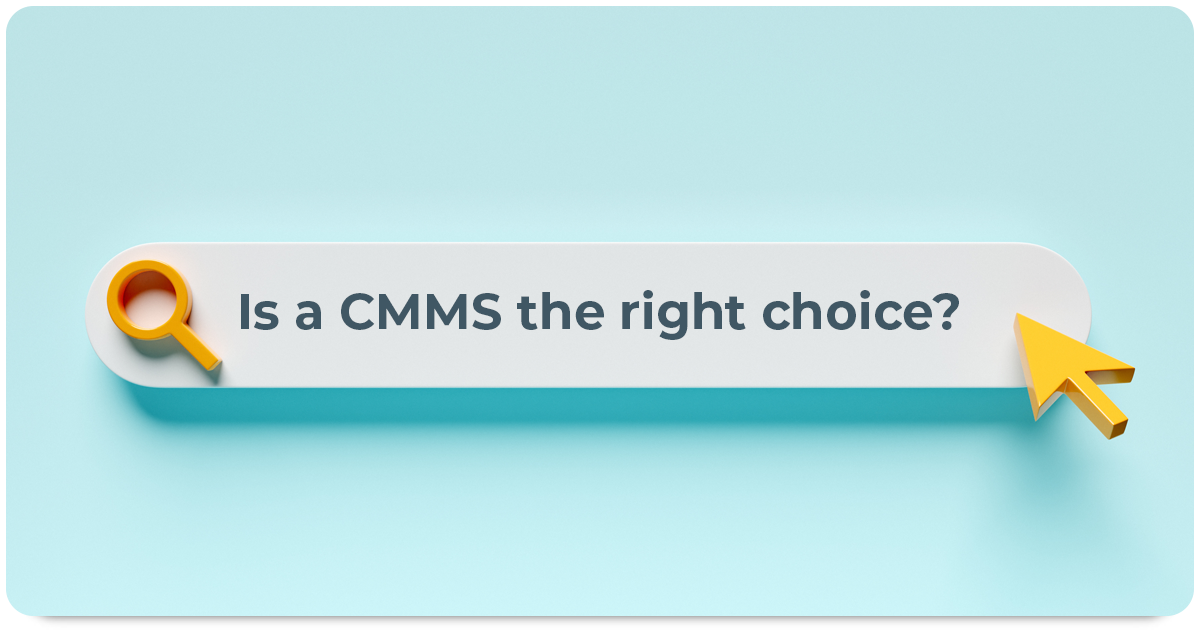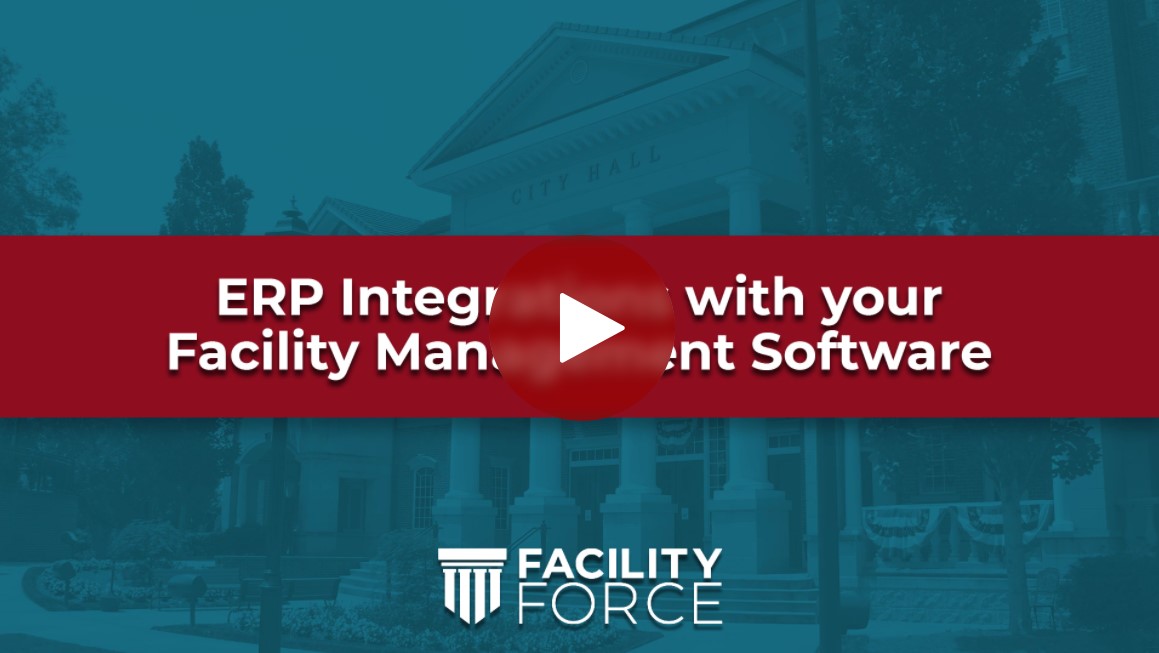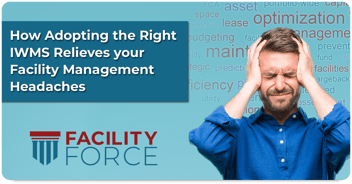It's a common occurrence for organizations to approach us in search of a new Computerized Maintenance Management System (CMMS), only to discover that what their organization actually requires is an Integrated Workplace Management System (IWMS).
If you're reading this blog, you might be in the market for a new facility management software system, perhaps even considering a CMMS. I would like to make the journey of finding a new FM System a little bit easier for you, so let's take a look at why an Integrated Workplace Management System might be the ideal solution for your needs.
Table of Contents
CMMS vs IWMS
In the world of facility management software, there is a term that we like to call "Alphabet Soup". This term is used to describe the endless amount of acronyms and vocabulary relating to the various facility management software systems out there. It can be a difficult task to figure out all the differences and similarities among the systems and what they can do for your organization. Let's start with CMMS:
What is CMMS Software?
One of the most popular terms and systems out there is a Computerized Maintenance Management System (CMMS). These systems have been around since the early years of computers, and the very first CMMS can be dated back to the 1960s. Although, at the time these systems were just using a form of punchcards. Since then there has been a tremendous evolution and these systems are much more advanced. A CMMS today is designed to streamline and optimize maintenance management activities within an organization. It helps maintenance teams efficiently track, manage, and schedule maintenance tasks for equipment, machinery, and other assets.
What is IWMS Software?
Sort of the "new kid on the block" is the Integrated Workplace Management System (IWMS). IWMS was first coined by Gartner, the research and consulting service, in 2004. If you compare an IWMS to other systems using the timeline of facility management software then you'll see that they're relatively "new" to the market.
An IWMS is the most comprehensive system you can choose from to manage and optimize your facilities, real estate, and assets. An IWMS solution integrates five core functional areas for Facilities Management on a single platform. Those five core areas include Real Estate & Properties, Facilities, Capital Planning & Projects, Operations & Maintenance, and Energy or Utilities.
The key differences between the two
CMMS is primarily focused on maintenance management. It helps organizations streamline and optimize maintenance activities facilities equipment, and other assets. Some key functionalities include work order management, preventive maintenance scheduling, asset management, and inventory control.
On the other hand, IWMS encompasses a broader range of functionalities beyond maintenance management. It integrates various aspects of workplace management, including real estate management, space planning & management, project management, sustainability management, and more. It does so on one unified platform to provide you with cross-departmental integration. An IWMS can also integrate with various systems, applications, and data sources to improve overall efficiency.

Read More: What is IWMS? The Only Guide You'll Need
Is an IWMS the Best Facilities Management System for you?
Learning what the capabilities of an IWMS are can be a real eye-opener to some organizations since they always believed a CMMS is what they truly needed. They're not to blame as a CMMS is the most prominent type of system out there, and the IWMS is much newer to the facility management scene. This brings up the question, "How do I know if I need an IWMS or can I stick with my CMMS search?".
While both Integrated Workplace Management Systems (IWMS) and Computerized Maintenance Management Systems (CMMS) serve the purpose of managing facilities and assets, an IWMS offers several advantages over a CMMS. Here are some reasons why you might look at choosing an IWMS for your organization:
- Comprehensive Solution: IWMS provides a comprehensive platform that integrates various aspects of facility management, including maintenance, real estate, space management, lease administration, sustainability, and more. This integration allows facility managers to oversee all aspects of their facilities from a single platform, streamlining processes and improving efficiency.
-
Centralized Data Management: IWMS centralizes data related to facilities, equipment, assets, leases, and maintenance activities. Having all this information in one system enables facility managers to access accurate and up-to-date data easily, facilitating informed decision-making and strategic planning.
-
Improved Asset Lifecycle Management: IWMS helps optimize the lifecycle management of assets by providing tools for tracking maintenance schedules, managing repairs and replacements, and assessing asset performance. This proactive approach helps extend asset lifespan, reduce downtime, and minimize unexpected failures.
-
Enhanced Space Utilization: IWMS includes features for space planning, allocation, and utilization analysis. Facility managers can optimize space usage, identify underutilized areas, and make informed decisions about space allocation, leading to cost savings and improved operational efficiency.
-
Efficient Maintenance Management: IWMS streamlines maintenance management processes by automating work orders, scheduling preventive maintenance tasks, tracking asset performance, and managing inventory and spare parts. This proactive maintenance approach helps minimize downtime, reduce maintenance costs, and prolong asset lifespan.
-
Cost Control and Optimization: IWMS provides tools for tracking facility-related costs, such as maintenance expenses, energy consumption, lease payments, and occupancy costs. Facility managers can analyze cost data, identify inefficiencies, and implement cost-saving measures to optimize operational expenses.
-
Compliance and Risk Management: IWMS includes features for tracking regulatory compliance requirements, safety standards, and environmental regulations. Facility managers can ensure that their facilities meet legal obligations, mitigate compliance risks, and maintain a safe and healthy working environment.
-
Improved Collaboration and Communication: IWMS facilitates collaboration and communication among facility management teams, stakeholders, and service providers. Centralized access to data, automated workflows, and real-time communication tools help streamline collaboration, improve transparency, and enhance productivity.
Overall, IWMS enables facility managers to optimize facility performance, reduce costs, mitigate risks, and enhance the overall workplace environment. By providing a comprehensive platform for managing all aspects of facility management, IWMS helps organizations achieve their operational objectives more efficiently and effectively.
Conclusion
This may be the first time you've ever heard of an IWMS, and this article may make you question whether a CMMS or IWMS is the right decision. It’s essential to consider the specific needs and priorities of your organization as the first step when choosing between all the different types of systems.
If your organization's primary focus is just maintenance management and you're looking for a more cost-effective system then I would suggest going down the CMMS route. If your organization is looking for a more complex and enterprise system to encompass multiple sections of your organization including your facilities, assets, maintenance & operations, capital planning, and energy then I would urge you to look at different IWMS systems.
Additional Videos:
Related Resources:
- Facilities Management Overview
- What is the Best IWMS Software for Government?
- The State of Alaska Tackles Statewide Deferred Maintenance
- Why Capital Budgeting Software is Critical in Government Facilities
- Three Keys to Effective Space Management
- Facilities System Integration
- FacilityForce's IWMS Solution







